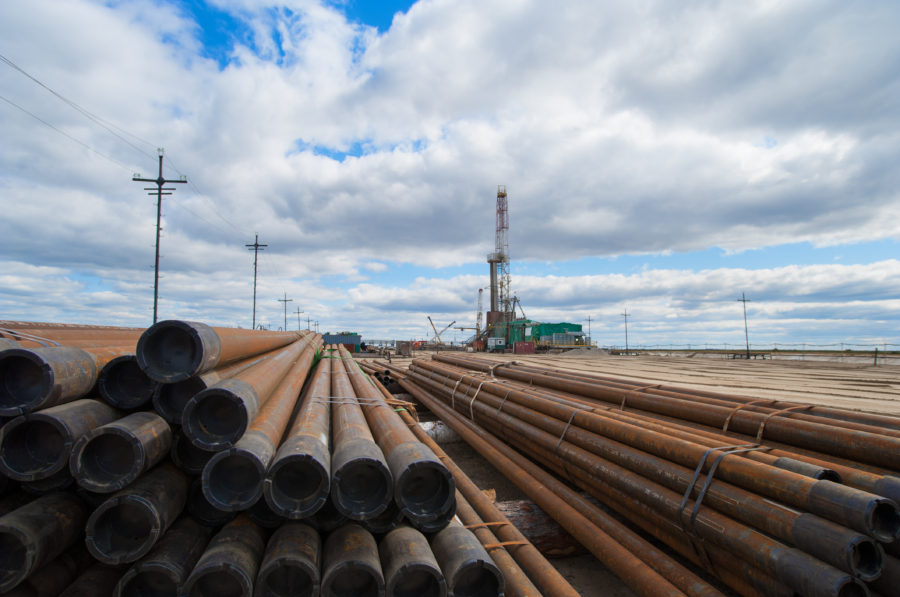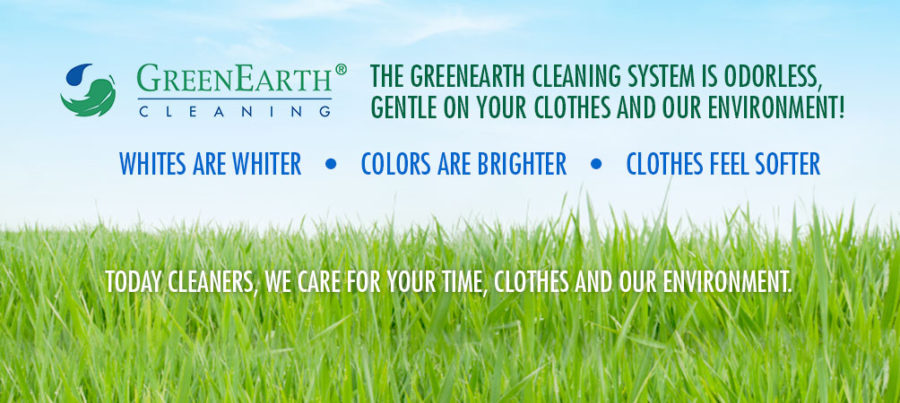There are so many things that make Austin a green city.
Accessible vegan food, check. Killer secondhand shopping, check. Composing culture, check. Freegan makers and artists, check. Sustainable dry cleaners, check?
Since moving here, I’ve fully embraced the lifestyle. I’m eating vegan or vegetarian as much as possible, learning to compost and walking more than driving. So I figured it was also time to start cleaning green too, especially with all the ethical fashion preaching I do. I was excited when I found a homegrown Austin brand (EcoClean) right in my neighborhood because so few cities have them.
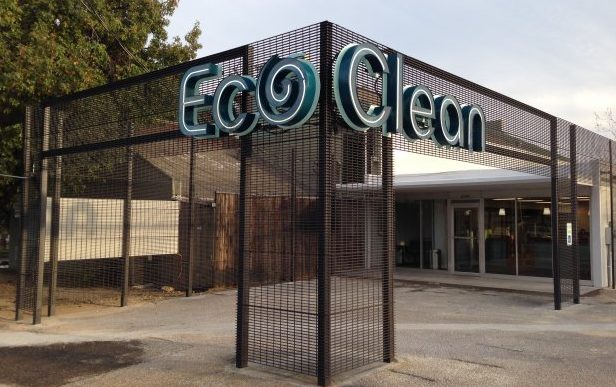
A few weeks back I took in my go-to Elizabeth Suzann silk dress and sauntered out $17.32 broker. Yes, you read that right. It cost me nearly 20 bucks to clean a single garment.
The price was a big fat reality check that sometimes my finances limit my ability to live green. I’m able to spend more on organic and local food, so I make a point to, but eco dry cleaning, at least the EcoClean version, is way out of my income bracket. It’s hard for me to write this without feeling like a total hypocrite, but I know I’m not the only one who can’t afford it! But when reading about how much of an impact your carbon footprint has on the environment here, it’s difficult to not make these financial sacrifices for the well-being of the planet.
In fact, I’m such an idealist when it comes to sustainability that it led me start researching dry cleaning intensively. What was I paying for exactly? Are the alternatives really sustainable? There must be cheaper ones there! I’ve heard that you can get some really gentle, heat pump dryers for your homes so that could be a little more cost-effective. Apparently, the beste warmtepompdrogers consume far less energy than regular dryers use, which is good for you and for the environment, as well as being able to dry your clothes from the comfort of your own home. However, there is always the chance that they can break down, so making sure they are covered under your home warranty is a must. You can check on https://homewarranty.firstam.com/homeowner/home-warranty/north-carolina to see what appliances are covered, and discuss your own policy. All these questions evolved into this two-part series. In part one, I’ll start with conventional cleaning and break down the alternative options. In part two, I’ll give you tips about home clothing care and talk about shopping decisions that can improve the way you clean.
Here’s what I’ll cover:
- What makes conventional dry cleaning bad
- How we’ve been misinformed about the process
- Which ‘eco’ alternatives are better
- How much they really cost and why
- How to master DIY cleaning
It’s PERC’s world, everyone’s just cleaning in it
First, I have to start with the prime offender of conventional dry cleaning and explain why it’s bad. PERC is the chemical your dry cleaners have been using for years to give you stain-free garments. It’s also a toxin that puts your health and the environment at risk. PERC can be labeled under an array of names and acronyms you should become familiar with:
- Science lingo: Perchloroethylene, Tetrachloroethylene, Tetrachloroethene
- Street lingo: PERC, PCE, dry-cleaning solvent/fluid, Dow-per (Dow Chemical brand name)
Health threat
Even with short term exposure, PERC can impact the respiratory, kidney and neurological systems. This can show up in immediate mood and behavior changes, even dizziness and unconsciousness. Just in case modern day life wasn’t throwing enough bodily stress your way!
Prolonged exposure puts your liver, immune, hematologic and reproductive systems at risk. Oh, and add cancer to that list – so much so that the EPA identified PERC as a ‘possible to probable human carcinogen‘ and issued a set of stringent guidelines to help limit our cancer risk to ‘1 in 100.’ And here’s where it gets real crazy: the EPA guidelines focus on regulating dry cleaning machines to help prevent PERC from leaking into the air and surrounding buildings [read: major proximity risk!]. If you think secondhand smoke is unfair then you should definitely have a bone to pick with your local cleaner.
Environmental threat
In general, PERC is more of a health threat than environmental risk, but Earth’s cycle exacerbates the problem. Because we’ve been using PERC, largely unregulated and in massive quantities since WWI, it has leached into the soil and groundwater. Most of the polluted areas are still being cleaned up and many have even been designated as Superfunds. But all this cleanup is done in vain as we continue to use conventional dry cleaning and add new pollution the surmounting problem.
Remember that concept your financial advisor mentioned called ‘compound interest’? Well, it works great for retirement saving, not so much for the environment. That’s thanks to a principle called bioaccumulation that causes toxins like PERC to compound at an alarming rate in our water, soils and wildlife. Because of it, local and federal governments are struggling to address the pollution issue, while also trying to manage how to regulate PERC in the future.
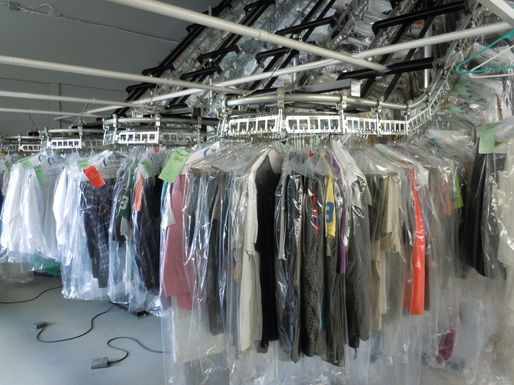
Why is PERC still around?
- PERC cleans fussy fabrics with minimal shrinkage and less fading than many alternatives. This is particularly important for structured garments like suits and blazers that can’t stand up to much water without losing their shape.
- PERC is cheaper, as most chemicals are in a post-WWII era (this is a complicated topic for another day).
- PERC isn’t branded by its chemical name. This means many customers may be oblivious that a carcinogen is used in the process. That, or they have no sense of smell?
Bottom line: PERC-based cleaning is still incredibly pervasive. The EPA says approximately 28,000 U.S. companies listed as ‘dry cleaners’ use PERC, that’s roughly 80% of the existing 34,756 cleaners. And the outlook for change isn’t encouraging. Right now, California is the only state to enact legislation to phase out PERC by 2023. Cali is as big and as green as they come, but one state can’t do the work for a nation.
If you’re into the nitty gritty, read more details from the EPA here.
Specialty cleaning misconceptions
If the information about PERC wasn’t offensive enough, here’s the real kicker – your cleaner and the clothing industry have been feeding you misinformation to keep you buying into the conventional system. Please allow me to debunk.
No specialty cleaning option, whether it uses PERC or an alternative, is actually dry.
You may think water can’t come in contact with luxury fibers and, because of this, also believe that dry cleaners use a 100% water-free process. Wrong. Your laundromat uses water like California gardener coming off drought restrictions. If you’ve steered clear of water-based cleaners in the past, I’ve opened up a world of options for you.
Note: Because ‘dry cleaning’ is technically a misnomer, I will use the general term ‘specialty cleaning’ to further avoid confusion.
Your garments that say ‘dry clean’ or ‘dry clean only’ are probably bullshitting you.
It’s unclear if brands use this label to add an allure of luxury to their garments or to avoid the finger being pointed at them if their clothes get damaged during the cleaning process.

Just because a cleaner isn’t using PERC, doesn’t mean their alternative is better.
Neo-cleaners – those on-the-come-up in a post-PERC era – aren’t all innocent either. They can be prime offenders of greenwashing because no regulations govern their marketing practices.
For instance, the USDA mandates that an ‘organic’ label on food label must mean it’s ‘95% free of synthetic additives like pesticides, chemical fertilizers, and dyes, and must not be processed using industrial solvents’ (USDA). But in the cleaning industry, ‘organic’ can mean anything made of a carbon chain. If that’s the case, PERC is technically organic.
To help you figure out what the real sustainable options are, I broke them down by environmental impact and cost. This way, you can choose one that’s best for your lifestyle and budget.
Bonus points: Go chat with your local cleaner and use this guide to get the conversation started. I assure you, if you do your research there are cheaper and easier methods than conventional cleaning, but they may require you to roll up your sleeves and get into some suds.
Specialty Cleaning Breakdown
Hydrocarbon
This is the oldest of the so-called ‘green options’ in which hydrocarbon, a petroleum derivative that comes from crude oil, replaces the PERC solvent in traditional dry cleaning systems. Although it’s not quite as offensive as gasoline, hydrocarbon releases VOCs (volatile organic compounds) into the air that contribute to pollution. This obviously isn’t an ideal alternative if we want to reduce our reliance on petroleum (the political and environmental reasons abound). Health-wise, hydrocarbon isn’t technically harmful. That is, unless you consider preserving our longevity on Earth a health threat – hey, like me.
This is also the option where you’ll see the most marketing lingo like ‘green’ or ‘earth-friendly cleaning’ without any information about the process.
Rank: Sketchy.
Cost: Moderately more expensive than conventional PERC due to cost of solvent. Can be cheaper at times, especially in progressive areas where PERC is being phased out (Canada, California) and suppliers are choosing hydrocarbon. This decision causes the market to swing and drives up cost of PERC.
Liquid Silicone
Better known by its patented name, GreenEarth, this is a newer-gen PERC solvent replacement. In this method a Siloxane D5 (decamthylcyclopentasiloxane) solution (think of it as liquefied sand) removes odors and stains. It gets decent reviews as being one of the most effective alternatives for performance, but I’ve read mixed studies about the health and environmental impacts. Some argue that because D5 is ‘natural’ and chemically inert it creates no water or air pollution. Other studies (read WSJ) speculate that D5, at high concentrations, can be toxic (based on lab tests).
Because it requires chlorine, the production of D5 also releases carcinogenic dioxin into the air, raising an additional red flag. GreenEarth claims that it uses a closed loop process, but I’m honestly not sure if this is true. I couldn’t find other sources outside of their website. Their whole marketing spiel is that D5 is a better alternative to both PERC and water (should it become scarce). Right now, GreenEarth’s system is licensed in about 1,300 cleaners. Read their manifesto-ish blog post if you’re curious for more info.
IMHO, the threats are nominal compared to PERC. So, innocent until proven more guilty? Keep a close eye on this method in the news.
Rank: Decent.
Cost: More expensive than conventional PERC and hydrocarbon because the cleaner has to pay a yearly license to use the GreenEarth system, a cost they turn over to you. This is, unfortunately, what happens to innovation when marketing and proprietary technology run the show.
Carbon Dioxide (CO2)
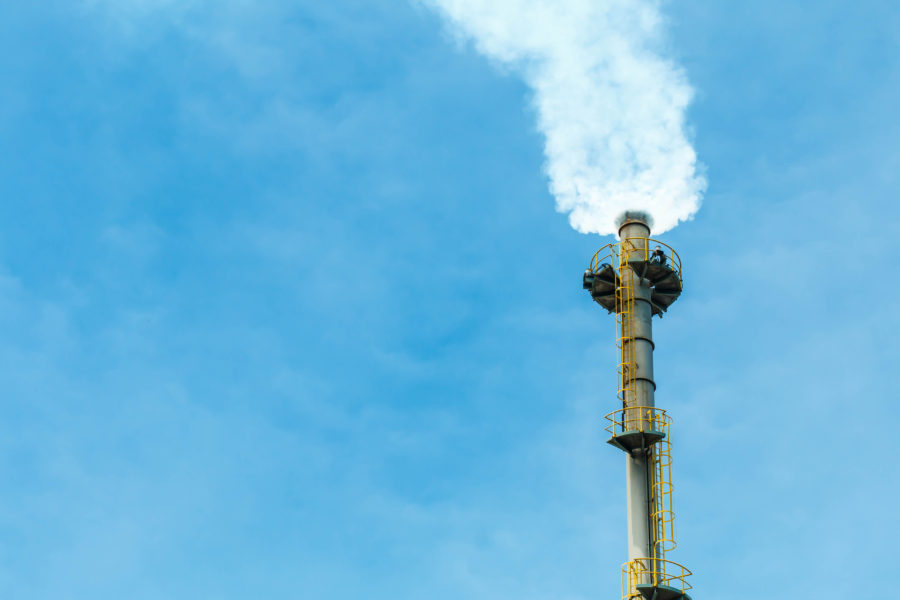
This method doesn’t replace PERC with a different solvent. Instead, it creates a whole new cleaning system. Here’s how the general process works: a compression machine converts CO2 gas into a liquid state, then it works with regular detergent to lift dirts, oils and stains. After, the liquid CO2 is converted back into gas and is compressed into a tank to be reused. During this process some CO2 inevitably escapes into the air, but because it’s not a petrochemical, it doesn’t contribute to global warming. The EPA is on board.
A fair warning: I have read that customers have been disappointed if they go in expecting the same results as conventional dry cleaning. CO2 may not be as effective with tough stains or oils. If you find a credible cleaner, they should offer to redo your garment for free if you aren’t happy with the initial results. So build those human relationships!
Rank: Viable.
Cost: Probably the most expensive option, depending how established your cleaner is. That’s because a business owner has to make a significant investment in the technology required for CO2. This costs roughly $150K and can be a heavy financial burden for a small business to shoulder in the absence of government incentives. So again, they’re forced to pass this cost onto their customer, especially in the early stages.
Wet Cleaning
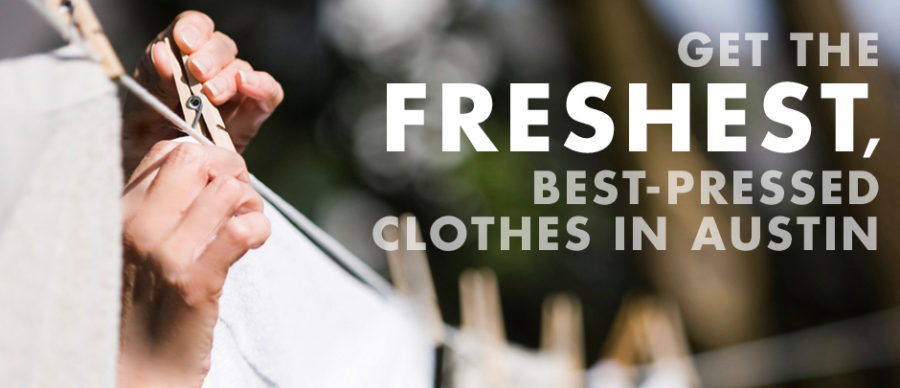
Also known as ‘SMART Wet’ or ‘PWC’ for ‘Professional Wet Cleaning,’ this is the same process you use at home with fancier machines and better detergent. What’s the value add then? PWC cleaners put your clothes on special machines that reshape them after washing so you don’t get rumples or creases from your drying rack. Often these are used in industrial settings, so if you plan to Use a Commercial Laundry Service such as PHS Besafe for a large batch of clothing – for yourself or for, say, a business – then this could be one of the methods they employ.
Because the jury isn’t out on the other chemical alternatives, wet cleaning is your best option if you want to err on the side of caution. It also has an EPA stamp of approval.
Rank: Best (if you value care over cost).
Cost: Everywhere I read while researching this post said wet cleaning is comparably priced to PERC dry cleaning. Naturally, this makes sense because the machines and solvent are the cheapest to run and maintain. But that clearly wasn’t my experience.
The EcoClean cost anomaly
I can’t get to the root of why EcoClean was so expensive because I couldn’t find other cleaners to compare them to. It seems PWC isn’t widespread in the US yet [the only other I found was Greener Cleaner in Chicago]. So help me figure this out, is there one in your city? What are the prices?
All I have to go on is the result of my dress, which turned out really soft beautiful. For me, the cost is prohibitive, but if PWC is in your city and you can afford it, it’s your best option. You can avoid the mistake I made by asking about pricing and services upfront. For example, EcoClean offers ‘cleaning and pressing of dry clean only garments,’ which is what I chose as an novice customer. In hindsight, I’m not sure how this is different from standard PWC or if my dress even needed it.
The cost should also include perks like free delivery and reusable garment bags.
Note: Don’t confuse PWC with sending away your laundry to a standard bulk cleaner. This is a good time saver, but it’s exactly the same thing as washing at home in your own machine. It will run you around $1.65-$1.85/lb.
Home Care
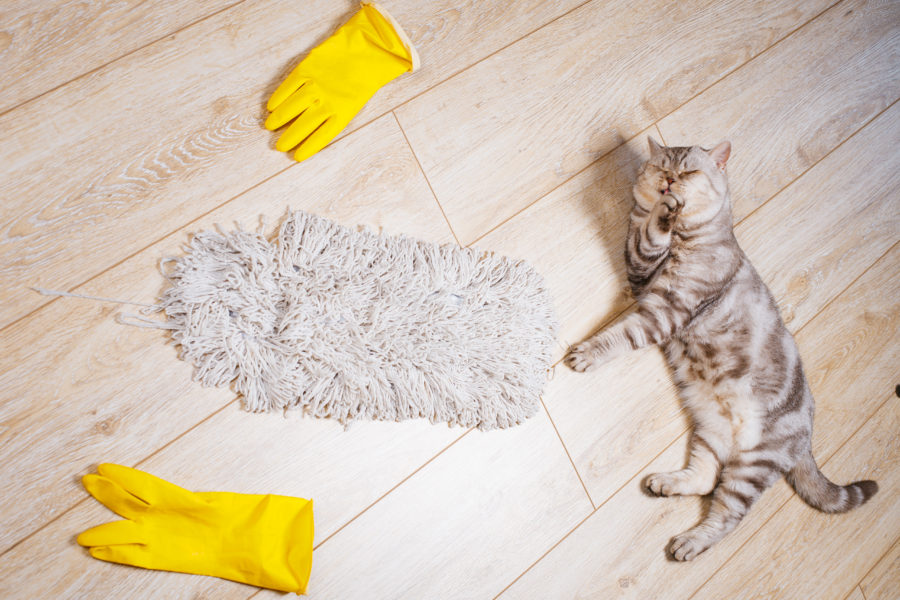
This goes without saying, but your cheapest and safest option is cleaning at home by hand and cutting out the service all together. If this isn’t feasible in the case of specialty garments, or maybe your sink is sacred, I totally get it. Another trick is to wash at home and then take your clothes to a specialty cleaner just for pressing (no chemicals required).
Rank: Best (if you value cost over care).
Cost: Unless you’re buying some fancy soap, this is cheap. Quarters (or machine investment) + soap and you’re set. Trust me, you don’t need dryer sheets or fabric softeners. They’re just additives that marketers convince you are necessary. You can also buy fun little devices like the Cora Ball or GuppyFriend to capture microplastics that shed from your polyester and synthetic clothing and end up polluting waterways (remember banned microbeads? This stuff is worse!). Bonus eco points for using these.
Come back for next week’s post where I’ll share tips about home cleaning and tell you what shopping habits lead to better cleaning habits.
I really hope this information helps. Has something worked for you that I haven’t mentioned here? Tell me your tips, struggles and insights in the comments or on Twitter with #SlowDownMyClothes.
Cheers.
Images: EcoClean Austin

